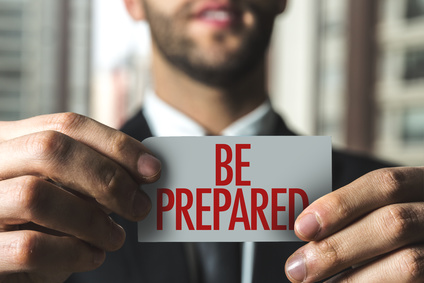Disasters and emergencies happen regularly. Watch the news and you’ll see one or more listed in the top stories.
Natural disasters could be a result of where you live.
If you live near water, you may experience flooding.
If you live near drier areas, you may be prone to wildfires.
If you live in the Midwest, you may see more tornadoes.
If you live on or near a fault line, you may experience earthquakes.
Click here for a list of natural disasters we experienced in the U.S. in 2019.
In addition to disasters, there are also emergency situations. Emergency situations could be an active shooter. It could also be a medical emergency, such as a heart attack or blocked airway.
While we don’t want to live in a bubble and fear every moment of life, we do want to be proactive.
If there was a disaster or emergency, does your family know what to do?
That’s where a family disaster/emergency plan comes into play. Templates to create a family plan can be found on several websites, including:
Centers for Disease Control and Prevention
Department of Homeland Security
Even, Microsoft Office has templates you can use to create a family plan.
Each disaster and emergency may have their own plan but begin by keeping it simple. Address disasters that could occur in your city, for example, hurricanes. Also, address common emergencies such as fire or medical conditions.
Here are three key items to include in your preliminary family disaster/emergency plan.
1- Who to contact
If you have minors at home, make sure they know how to dial 9-1-1 and can recite your home address. Create a contact list to include all family members and known medical conditions.
2- Where to go
Identify a safe place in your home for protection from earthquakes or tornadoes. Also, create an evacuation route in case there is a fire. If you are unable to return home, determine where you would meet.
3- What items are for disasters/emergencies
Keep in your home basic items such as fire extinguishers, first aid kit, flashlights, batteries, and phone chargers. Also, consider having an emergency radio in case there is no cell coverage or power.
For survival, the CDC recommends having at least three days supply of non-perishable food and water (one gallon per person per day). If you have pets, you’ll need supplies for them as well.
Having a family disaster/emergency plan in place is only valuable if it is understood by all household members. In the beginning, review the plan monthly with everyone.
As everyone becomes familiar with it, then review it less frequently – at a minimum once a year. During your reviews, add more detail and refresh supplies, if necessary.
Disasters and emergencies can happen unexpectedly. To be better prepared, develop a family disaster/emergency plan and continue living life.
ABOUT THE AUTHOR:
 Niv Persaud, CFP®, CDFA™, RICP®, CRPC®, is the Founder of Transition Planning & Guidance, LLC. Life is more than money. It’s about living the lifestyle you want and can afford. For that reason, Niv consults with clients on money, life, and work. Her approach capitalizes on techniques she learned throughout her career, including as a management consultant, executive recruiter, and financial advisor. Her services include developing spending plans, comprehensive financial plans, divorce financial reviews, retirement plans. Niv actively gives back to her community through her volunteer efforts. She believes in living life to the fullest by cherishing friendships, enjoying the beauty of nature and laughing often — even at herself. Her favorite quote is by Erma Bombeck, “When I stand before God at the end of my life, I would hope that I would not have a single bit of talent left and could say ‘I used everything you gave me.’”
Niv Persaud, CFP®, CDFA™, RICP®, CRPC®, is the Founder of Transition Planning & Guidance, LLC. Life is more than money. It’s about living the lifestyle you want and can afford. For that reason, Niv consults with clients on money, life, and work. Her approach capitalizes on techniques she learned throughout her career, including as a management consultant, executive recruiter, and financial advisor. Her services include developing spending plans, comprehensive financial plans, divorce financial reviews, retirement plans. Niv actively gives back to her community through her volunteer efforts. She believes in living life to the fullest by cherishing friendships, enjoying the beauty of nature and laughing often — even at herself. Her favorite quote is by Erma Bombeck, “When I stand before God at the end of my life, I would hope that I would not have a single bit of talent left and could say ‘I used everything you gave me.’”
More “Peace of Mind” Posts:

